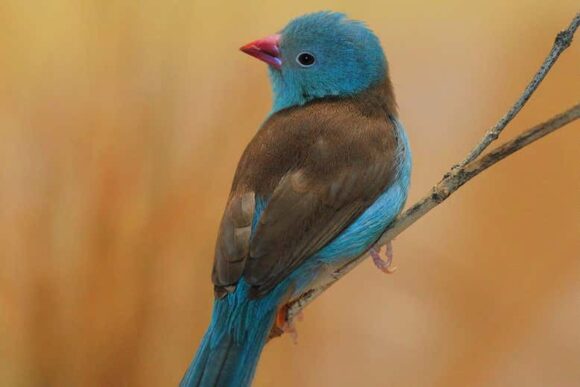Reading The Bird Way by Jennifer Ackerman for New Scientist, 17 June 2020
Visit the Australian National Botanic Gardens in Canberra, and you may stumble upon an odd sight: a human figure, festooned with futuristic-looking monitoring gear. Is it a statue? No: when children poke it (this happens a lot) the statue blinks.
Meet Jessica McLachlan, a researcher at Australian National University, at work studying the fine, never-before-detected details of bird behaviour. The gear she wears is what it takes to observe the world as birds themselves see it. Not to put too fine a point on it, birds are a lot faster than we are.
Bird brains are miracles of miniaturisation. Their neurons are smaller, more numerous, and more densely packed. They differ architecturally too, cramming more and faster processing power into a smaller space.
This means that in the bird world, things happen fast — sometimes too fast for us to see. (Unless you film blue-capped cordon-bleus at 300 frames-per-second video, how could you possibly know that they tap-dancing in time with their singing?)
Modern recording equipment enables us to study an otherwise invisible world. For example, by strapping tiny backpacks to seabirds, and correlating their flight with known ocean activities, we’ve discovered that birds have a quite extraordinary sense of smell, following krill across apparently featureless horizons that are, for them, “elaborate landscapes of eddying odor plumes.”
Science and nature writer Jennifer Ackerman’s fresh, re-invigorated account of the world of birds is arranged on traditional lines (sections cover her subjects’ singing, work play, love and parenting), but it is informed, and transformed, by accounts of cybernetically enhanced field studies, forensic analyses and ambitious global collaboration. She has travelled far and talked to many, she is generous to a fault with her academic sources, and her descriptions of her visits, field trips and adventures are engaging, but never obtrusive.
Her account centers on the bird life of Australia. This is reasonable: bird song began here. Songbirds, parrots and pigeons evolved here. In Australia, birds fill more ecological niches, are smarter, and longer-lived.
Like every ornithological writer before her, Ackerman is besotted by the sheer variety of her subjects. One of the most endearing passages in her book compares parrots and corvids. Both are intelligent, highly social species, but, after 92 million years of evolutionary separation, the similarities stop there. Ravens are frightened of novelty. Keas lap it up. Keas, confronted by a new researcher, will abandon a task to go play with the stranger. Ravens will simply wig out. Ravens have a strict feeding hierarchy. Curious male Kea will good-naturedly stuff food down an unfamiliar youngster’s gullet to the point where it’s fending them off.
Ackerman’s account is often jaw-dropping, and never more shocking than when she assembles the evidence for the cultural sophistication of bird song. Birds decode far more from sounds than we do and until recently we’ve been deaf to their acoustic complexity. Japanese tits use 11 different notes in their songs, and it’s the combination of notes that encodes information. Swap two notes around, and you elicit different responses. If this isn’t quite syntax, it’s something very like it. The drongo has absolute conscious control over its song, using up to 45 mimicked alarm calls to frighten other species, such as meerkats, into dropping their lunch — and it will target specific warning calls at individuals so they don’t twig what’s going on.
Meanwhile, many different species of bird worldwide, from Australia to Africa to the Himalayas, appear to have developed a universal, and universally comprehensible signal to warn of the approach of brood parasites (cuckoos and the like).
If the twentieth century was the golden age of laboratory study, the 21st is shaping up to become a renaissance for the sorts of field studies Charles Darwin would recognise. Now that cybernetically enhanced researchers like Jessica McLachlan can follow individuals, we have a chance to gauge and understand the intelligence exhibited by the animals around us. Intelligence en masse is, after all, really hard to spot. It doesn’t suit tabulation, or statistical analysis. It doesn’t make itself known from a distance. Intelligent behaviour is unusual. It’s novel. It takes a long time to spot.
If birds are as intelligent as so many of the stories in Ackerman’s eye-opening book suggest, then this, of course, may only be the start of our problems. In Sweden, corvid researchers Mathias and Helena Osvath have befriended a raven who turns up for their experiments, aces them, then flaps off again. “In the ethics section of grant applications,” says Matthias, “it’s difficult to explain…”

